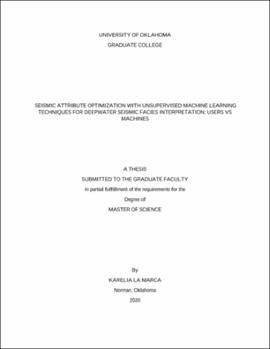| dc.description.abstract | Machine learning (ML) has many applications within the geosciences, from predicting seismic facies, to automatic fault detection. A variety of machine learning algorithms are commonly employed, among these principal component analysis (PCA) and self-organized maps (SOMs), which provide a fast organization of data into groups that aid in geological interpretation. It is, nevertheless, interesting to note that parametrization choices during algorithm initiation could create a range of reasonable output model responses. The goal of PCA is to reduce a multivariate space down to a computationally more manageable size of variables. But this method relies primarily on the mathematically calculated eigenvectors and does not consider the a priori knowledge of the interpreter. The main motivation of this research is to investigate the impact of a user-controlled selection of attributes to perform SOM for facies classification versus a machine- derived result. Looking at a reflection seismic data of deepwater channel systems in the Taranaki Basin, a variety of attribute classes are systematically examined, including geometric, instantaneous, and textural attributes, in mixed combinations with one another, to understand how input variability alters the resultant SOM classification for deepwater architectural elements and facies characterization. The findings reveal that an appropriate combination of attributes with a clear interpretation objective enhance the SOMs results and facilitates the interpreter understanding of the output classes especially if attributes are previously tested. On the other hand, PCA provides insightful information regarding the contribution of attributes that may not have been initially considered by the interpreter. This study reveals that while ML techniques are a powerful tool for geological interpretation, user control on initial input attributes and to validate output results remain necessary for an optimal interpretation, at least in unsupervised ML methods. | en_US |
